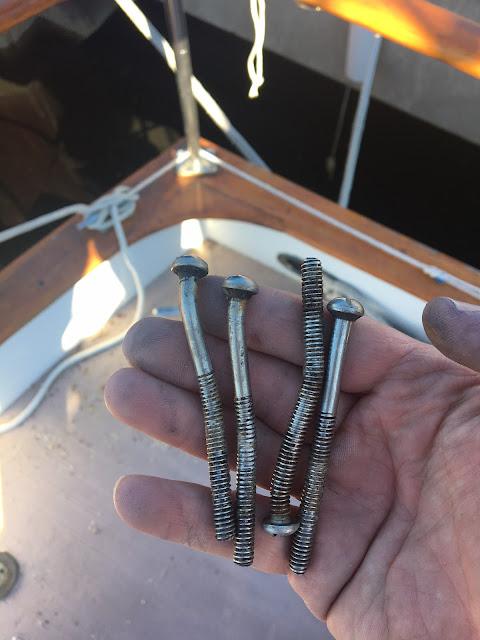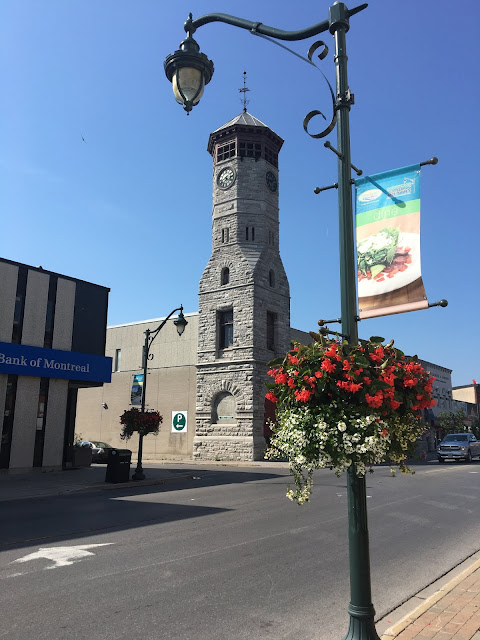When a safe harbor isn't
Since arriving home to St. Joseph, Molly has been berthed in Waterfront Marina, which is conveniently located just off the channel and within walking distance of the cottage and downtown. The marina docks are in good shape, the area is gated, and there's a pool and clubhouse. All of those things make it just about an ideal marina. Except for one thing: it's a surging, seething mess when the wind blows anywhere from SW to NW. We knew this when we decided to keep Molly there for the remainder of this season, but we hoped that there would only be one or two bad days and that those days wouldn't arrive until October. Instead, we've already endured four or five days of chafed and broken dock lines, compromised cleats, and enough aggravation for one season. The video below shows how much Molly surges around with only moderate swell in the channel just beyond the seawall. By the way, you can also see how many slip owners have dealt with the lousy conditions in the marina: they've installed lifts, which run about $1 per pound of vessel displacement.
Last weekend I installed two new cleats on the aft deck after the port stern cleat looked ready to pull loose from the deck. (And a few weeks before that, I installed two cleats on the forward deck when we observed the samson post working under the strain of the bow lines). Albin installed the aft and midship cleats on teak pads to provide additional clearance under the cleat horns; however, the teak pads are not fastened to the deck by anything other than four 1/4"-20 fasteners, relying solely on clamping pressure to keep the pad from sliding out of position. With enough force, the cleat and pad are pulled off at an angle, bending the fasteners - as evidenced in the picture below. A far better installation would have been to either epoxy or mechanically fasten the teak pad to the deck structure and then through-bolt the whole assembly. But anyway, this is not surprising: I've seen enough errors in build on other boats to know that they're all built to a price point, which means there are - generally - plenty of shortcuts. Beyond that, Molly's cleats have held up to almost forty years of use, so that's a decent run.
 |
| Port stern cleat fasteners after a few hours of Waterfront surge. |
Yesterday we hauled Ariel and moved Molly over to her slip for the remainder of the season, where she'll be more protected and a lot less worry.



Comments
Post a Comment